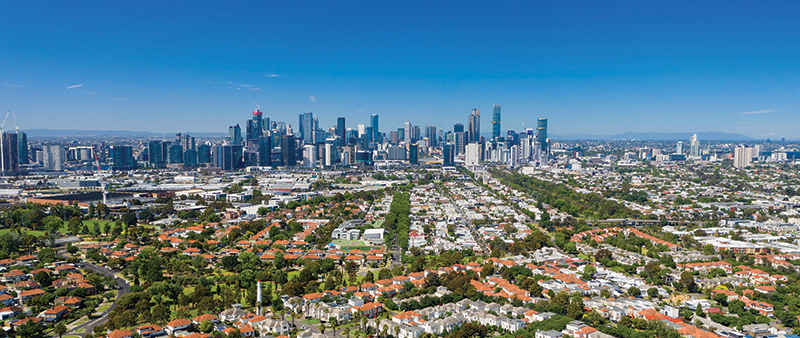Well-planned, connected and resilient built environment
Key issues: Planning and building; community resilience and emergency management; infrastructure & transport

Current situation
The State Government has a critical leadership role to play in ensuring our built environment – our homes, our workplaces, our towns and cities – are safe, sustainable and great places to live, work, and visit.
What we need from the state government
- A commitment to protect the democratic legitimacy of the planning system by respecting local decision making
- Reform of Victoria’s building regulatory system to provide safe buildings and adequate resources to councils to play an increased role
- Review of the planning system to ensure that community benefit is prioritised over private financial windfalls, including through improved infrastructure contribution mechanisms and greater provision of social and affordable housing
- Transparent reporting on the net community benefit and economic gain expected from major planning decisions and reforms
- An evidence-driven and state-led approach to ensure that planning schemes accurately reflect and manage environmental hazards and increasing climate change risks
- Improvements to the planning scheme amendment process to ensure councils can develop and implement local policy in an efficient and timely manner.
Community resilience and emergency management
Current situation
Local government’s cradle-to-the-grave involvement in people’s lives, and links to community groups and local businesses provide a solid foundation on which to build effective community resilience.
What we need from the state government
- Expand the annual $4.98M Municipal Emergency Resourcing Program to cover all 79 councils, with a reviewed formula based on risk and capacity, and invest immediately in training for councils’ statutory emergency management roles. Significantly higher levels of ongoing funding, reflective of risk and community expectations are essential. As an immediate step, an additional $7M is needed to fund one FTE in each council, while a transparent risk and capacity based formula is developed
- Dedicated funding for local hazard mitigation works and community resilience building
- Support councils to expand implementation of the Local Government Guide for Preventing Family Violence and meet obligations under the Gender Equality Act to strengthen community safety and cohesion.
Infrastructure & transport
Current situation
Communities across the state are seeing increased pressures on paths, roads, transport, infrastructure, and community services driven by population changes and economic growth and the increasing cost of asset maintenance.
What we need from the state government
- $230 million over four years for priority walking and cycling projects in all Victorian councils
- Funding councils to deliver local priorities, for example, by reinstating a dedicated rural roads fund to support councils in essential maintenance and upgrades of roads in rural and regional municipalities
- Establishment of a local road blackspot treatment and prevention program targeting local intersections, road segments or users to reduce risk, as well as funding for proactive treatment of sites identified as potential future priorities through safe system assessments
- Support councils to access better data and information systems to improve their asset management capability
- Continued state investment in safe school access, and
- Commit to acting on findings of the Parliamentary Inquiry into Electric Vehicles, including exploring the feasibility of joint state/local government procurement of electric vehicles and improving electric vehicle infrastructure.
